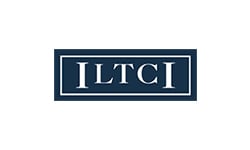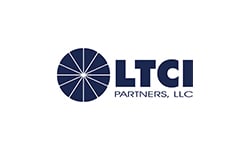Before engaging clients in an effective planning process to address “long-term care” you need to understand what it is, and what it is not.
Various terms, their meanings and usage can be confusing and often overlap. Clients and advisors also bring individual experiences and misconceptions to the table which can cloud meaningful conversations. Effective planning requires an advisor to clearly guide a client’s engagement, education, and ultimately decisions regarding plans to pay for care.
What is “long-term care”? Or as some call it, “extended care”, or the new public policy term, “long-term services and supports” abbreviated, “LTSS”? These terms should be understood to mean the same thing in the context of planning for care.
First, understand long-term care is not a place, it is an “event” – a need for personal help. In other words, the subject itself should not be defined as professional care in a nursing home or assisted living or even at home. Rather, it should be defined as a continuum of impairments, or degrees of disability, that require the assistance of another person to help you get through the day. The need for care may come on suddenly like from a fall or other accident, or more commonly care needs develop and increase over time as the effects of a medical condition or frailty progressively compromise the ability to safely live without assistance.
Extended care impairments can range from help with basic housekeeping chores, to needing personal assistance with tasks like bathing and dressing or safety supervision for a person with dementia, to 24/7 attention for a bed-bound person, and end-of-life care. Care services can be either paid, formal, “professional” care or unpaid, “informal” care from family and friends.
This continuum of care is not necessarily linear. Many people will move back and forth between degrees of impairment and types of care services needed. Often multiple needs exist together. For example, a person who needs physical assistance bathing and dressing likely also needs help doing laundry and cleaning their home. A person with Alzheimer’s may need basic supervision for health and safety along with help paying bills.
The new, wonky term LTSS attempts to capture this range of “services and supports” which are non-medical or “custodial” in nature. Understanding each type of service or support along the care continuum is critical in effective client engagement and extended care planning.
Help with a person’s surroundings, taking care of their home – also called “environmental” assistance – includes tasks like laundry, house cleaning, cooking, bill paying, transportation, even telephone management. In LTC insurance policies these are called “homemaker” services. The technical term is “Instrumental Activities of Daily Living” (IADLs). As you can imagine, nearly all of us – if we live long enough – will need help with IADLs.
If a person only needs help with homemaker tasks/IADLs, they may no longer be able to effectively live alone without some help, but on their own, these services are not covered by any type of government benefit or insurance because it is an “expected need”. Homemaker services are usually provided by a spouse or adult kids or other “informal” caregivers; if paid-for, IADL support by itself is always an out-of-pocket expense. Homemaker services are covered by LTC insurance when there is also a primary need for qualified personal care.
The next step along the extended care continuum is, “personal care”. There are two types: Physical assistance with “Activities of Daily Living” (ADLs) or help because of a mental limitation or a “cognitive impairment” – we commonly think of Alzheimer’s or dementia, but it could be from a stroke or head injury.
The six most common ADLs used to measure personal care are: transferring (in and out of a bed or chair), toileting, bathing, dressing, eating, and continence. LTC insurance policies use this list to trigger benefits when a policyholder needs at least “stand-by” help with at least two of these six ADLs. Note that many professional care providers and facilities also consider “ambulating” or “mobility” as ADLs but they are not used in LTC insurance definitions.
A cognitive impairment creates a need for “supervisory” assistance to make sure the person is safe. For example, someone with early-stage Alzheimer’s may be able to perform all of her physical ADLs but may not be able to make good decisions regarding taking needed medications (or taking too much medication), leaving the stove on, or wandering from home.
Finally, long-term care is not short-term care. Generally, extended care is assistance needed for more than 90-days. And Medicare never pays for “long-term” care, it only pays for short-term, rehabilitative care.
These core definitions will be used and expanded upon throughout the rest of this series of articles.
By Bill Comfort, CLTC®















-CMYK.png?width=250&name=LifeSecureLogo(F)-CMYK.png)



.png?width=860&height=245&name=Full%20Color%20Krause%20Group%20Horizontal%20(002).png)


